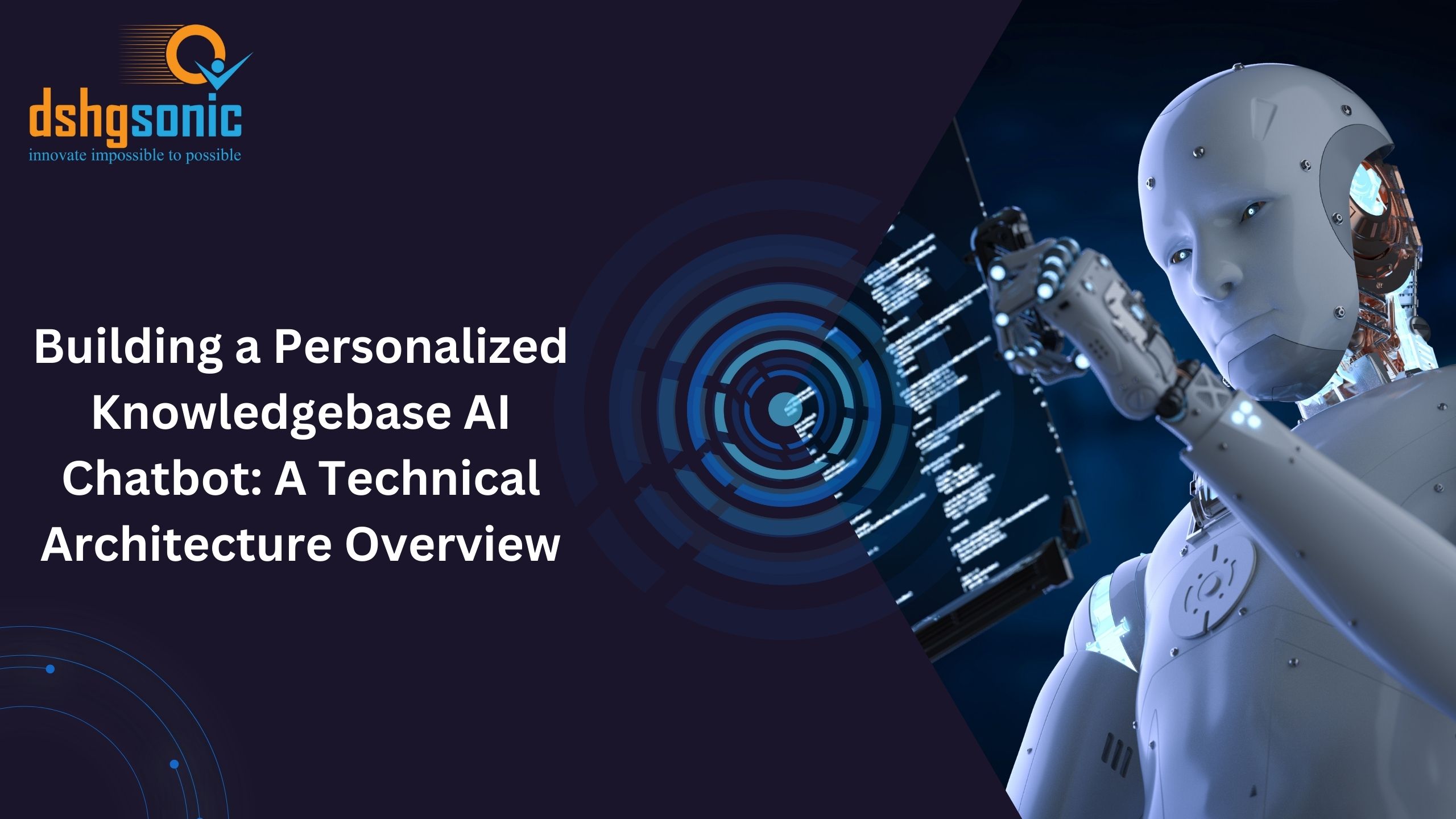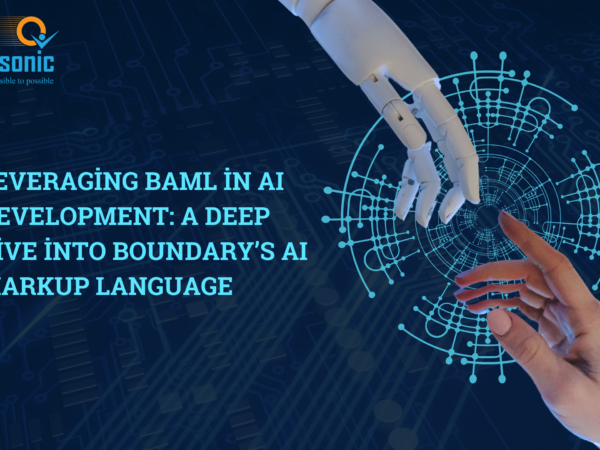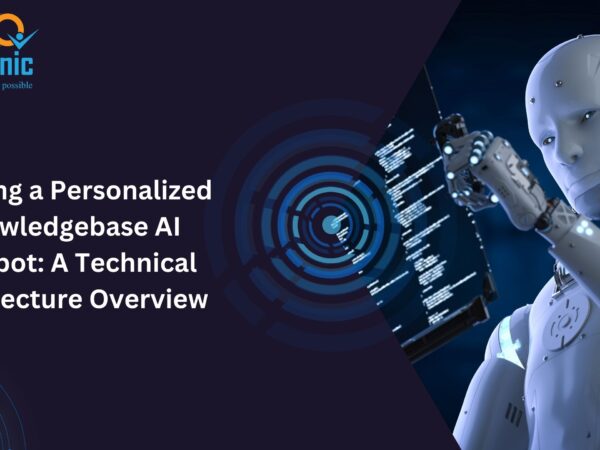Introduction
In today’s AI-driven landscape, organizations require efficient methods to manage and retrieve knowledge. A personalized AI chatbot operating within a structured knowledgebase ensures security, accuracy, and controlled data modifications restricted to authorized personnel. This article explores the technical architecture behind such a chatbot, covering its components, functionality, and deployment strategy.
System Overview
The chatbot system consists of a React (MUI) frontend, a Python backend, and a Mistral 7B quantized AI model developed by DSHG Sonic. The deployment strategy utilizes T5xlarge servers with Docker to ensure scalability and reliability. The chatbot processes knowledge from PDF documents, converts them into structured data, and stores them in AstraDB. LangChain is used to generate embeddings for efficient retrieval.
Architecture Breakdown
Admin Role: Knowledgebase Management
The admin plays a crucial role in maintaining the knowledgebase to ensure accurate and structured information. The process involves several key steps:
1. Data Ingestion
The admin uploads PDF files containing domain-specific knowledge into the system. These documents serve as the primary source of structured information.
2. Text Processing & Chunking
Once uploaded, the PDF content undergoes text extraction. The extracted text is then segmented into smaller chunks, allowing for efficient embedding and retrieval.
3. Embedding Generation
Using LangChain, each chunk undergoes embedding generation. This step ensures that the chatbot can semantically understand and retrieve relevant information based on user queries.
4. Storage in AstraDB
Both text chunks and their corresponding embeddings are stored in AstraDB, optimizing retrieval speed and ensuring accurate search results. The database facilitates low-latency vector searches for efficient query handling.
User Role: Query Processing & Retrieval
Users interact with the chatbot to retrieve information based on their queries. The process follows a structured pipeline:
1. Query Submission
Users input their queries through the React (MUI) frontend, which provides an intuitive interface for seamless interaction.
2. Embedding Generation
LangChain generates an embedding for the user’s query, allowing the system to process the request semantically.
3. Similarity Matching
Cosine similarity is applied to compare the query embedding with stored knowledge embeddings in AstraDB. The system identifies the most relevant knowledge chunks based on their semantic similarity to the query.
4. Response Generation
The retrieved knowledge chunks are processed by the Mistral 7B model, developed by DSHG Sonic, which is exclusively trained on the stored knowledgebase. The model formulates a precise and contextually accurate response.
5. Frontend Display
The final response is delivered to the user via the React UI, providing a seamless experience with instant and relevant answers.
Deployment Strategy
1. Dockerized Backend
The backend, including the AI model and knowledgebase management system, is containerized using Docker. This ensures seamless deployment, portability, and ease of scaling across multiple environments.
2. T5xlarge Server Utilization
T5xlarge servers provide robust computational power, ensuring efficient handling of multiple queries simultaneously. This infrastructure supports rapid response times and high availability.
3. Optimized Storage & Retrieval
AstraDB’s low-latency vector search significantly enhances response generation by enabling quick retrieval of relevant information. This ensures that users receive precise answers with minimal delay.
Mistral Setup and Usage
The Mistral 7B model, developed by DSHG Sonic, is integrated into the chatbot for optimal response generation. The setup involves:
- Installation & Configuration: Deploying the Mistral model in a Docker container with the necessary dependencies.
- Fine-Tuning: Training the model with domain-specific data to enhance accuracy and relevance.
- API Integration: Connecting the model with the chatbot backend to process queries and generate responses efficiently.
By leveraging Mistral’s capabilities, the chatbot provides precise and context-aware responses, improving overall user satisfaction.
Mistral Model Advantages
The Mistral 7B model offers several advantages that enhance chatbot performance:
- High Accuracy: Optimized for semantic understanding, ensuring precise answers.
- Low Latency: Fast inference speed for real-time query resolution.
- Customizability: Can be fine-tuned for domain-specific applications.
Security & Access Control
Security is a core component of the chatbot architecture.
- Admin Privileges: Only authorized admins can modify the knowledgebase, preventing unauthorized data alterations.
- Authentication & Authorization: User access is managed through secure authentication protocols, ensuring that only permitted individuals interact with the system.
- Data Encryption: All stored and transmitted data undergoes encryption to safeguard sensitive information.
- Role-Based Access Control: Implementing RBAC ensures users have appropriate permissions based on their roles.
Scalability Considerations
The chatbot architecture is designed to be highly scalable.
- Horizontal Scaling: Multiple instances of the chatbot can run simultaneously, distributing workload efficiently.
- Auto-scaling in Cloud Environments: Dynamic scaling is implemented to accommodate fluctuating user demands.
- Efficient Query Processing: The use of embeddings and similarity matching ensures that response times remain fast even with large datasets.
- Caching Mechanisms: Frequently queried data is cached to reduce processing time and server load.
Challenges & Mitigation Strategies
1. Handling Large-Scale Data
As the knowledgebase grows, data retrieval can become inefficient. Solutions include:
- Efficient Indexing: Implementing optimized indexing techniques in AstraDB.
- Sharding: Distributing data across multiple nodes for faster access.
2. Ensuring Response Accuracy
Maintaining response accuracy is critical. Approaches include:
- Continuous Model Training: Regular updates to Mistral 7B with new knowledge.
- User Feedback Loop: Integrating feedback mechanisms to refine responses.
3. Preventing Model Bias
AI models can exhibit biases based on training data. Solutions involve:
- Diverse Training Data: Ensuring a balanced dataset for training.
- Bias Detection Algorithms: Implementing fairness-aware AI techniques.
Future Enhancements
To further improve the chatbot’s capabilities, the following enhancements are considered:
- Multi-Language Support: Expanding the chatbot’s capabilities to process queries in multiple languages.
- Integration with External APIs: Connecting with third-party services for additional knowledge enrichment.
- Enhanced NLP Models: Upgrading to more advanced AI models to improve contextual understanding and response quality.
- Voice Assistant Integration: Enabling voice-based queries for an enhanced user experience.
- Automated Knowledgebase Updates: Implementing AI-driven mechanisms to keep the knowledgebase up to date.
Conclusion
The proposed architecture provides a structured, efficient, and scalable chatbot system for personalized knowledge retrieval. By leveraging React, Python, Mistral 7B, AstraDB, and LangChain, the system ensures secure knowledge management and accurate query resolution. With restricted admin control over data entry and optimized retrieval mechanisms, this chatbot serves as a powerful AI-driven solution for organizations seeking reliable and intelligent information retrieval systems.
With continuous improvements, including multilingual support, API integrations, and advanced NLP capabilities, the chatbot will evolve to meet diverse organizational needs while maintaining efficiency and scalability.








